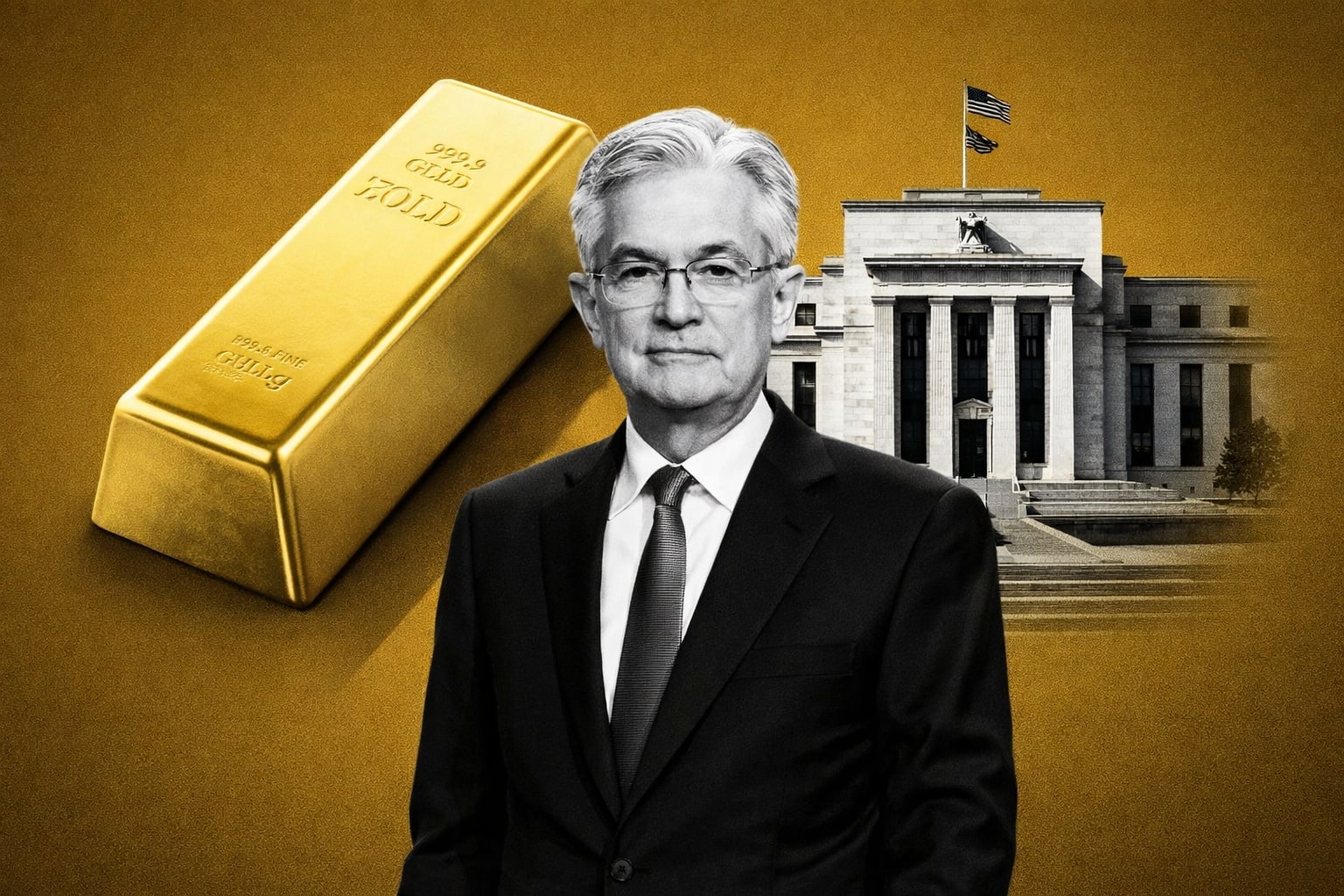
Gold Prices Edge Higher Amid Fed Rate Cut Speculation and Inflation Concerns
As inflation eases and geopolitical uncertainty rises, XAU/USD breaks key resistance levels, positioning itself for further gains backed by strong safe-haven demand | That's TradingNEWS
Gold Price Surges Amid U.S. Inflation Data and Federal Reserve Rate Cut Speculation (XAU/USD)
Recent Momentum in Gold Price
Gold prices (XAU/USD) have gained positive traction for three consecutive days, moving up from the $2,485 level and approaching a fresh weekly high. Bulls are building on this momentum, pushing the commodity toward the $2,525-$2,526 supply zone. The weakening of the U.S. Dollar (USD) amid expectations of a dovish Federal Reserve (Fed) has been a key driver of this bullish trend. The USD struggled to maintain its gains after reaching a monthly peak, further supporting the non-yielding precious metal.
Haven Demand Amid Weaker Risk Sentiment
The market's appetite for gold is also fueled by a generally weaker risk tone, as traders seek safe-haven assets ahead of key U.S. inflation data. Investors are closely watching the release of the U.S. Consumer Price Index (CPI), which will be crucial in shaping the Fed’s decision on rate cuts in September. With the current market environment, the fundamental backdrop suggests that the path of least resistance for gold is still upward.
U.S. CPI Data: Key Driver for Gold’s Direction
The headline U.S. Consumer Price Index (CPI) is anticipated to rise by 0.2% in August, with the annual rate expected to decelerate to 2.6%, down from 2.9%. Meanwhile, core CPI, excluding volatile components like food and energy, is forecast to remain steady at a 3.2% YoY rate. Signs of cooling inflation could reinforce market expectations for a more aggressive easing of monetary policy, which would be bullish for gold.
CME FedWatch Tool Insights
According to the CME FedWatch Tool, markets are currently pricing in a 67% chance of a 25-basis-point rate cut at the next Federal Open Market Committee (FOMC) policy meeting in mid-September. Despite potential signs of stronger inflation, investors remain convinced that the Fed will lower borrowing costs, further boosting gold’s appeal.
Technical Outlook: Bullish Momentum in Gold Prices
Key Resistance Levels in Focus
From a technical standpoint, the $2,525-$2,526 level is a critical resistance zone, marking the upper boundary of a multi-week trading range. Breaking above this zone could trigger fresh buying interest and lead to a move beyond the $2,532 level, potentially testing all-time highs. Oscillators on the daily chart indicate a continued uptrend, with momentum away from overbought territory.
Downside Risks
However, downside risks remain. The $2,500 psychological support level could provide immediate protection, followed by stronger support at $2,485 and $2,470. A decisive break below these levels could trigger deeper losses, potentially accelerating a fall towards the 50-day Simple Moving Average (SMA) at $2,450-$2,449. A break below this could see gold prices fall toward sub-$2,400 levels, supported by the 100-day SMA.
Macro Drivers Behind Gold’s Surge
U.S. Fiscal Policy and Market Sentiment
Gold’s 20% rise year-to-date, peaking at $2,531.75 in August, reflects strong underlying factors that have supported the metal throughout 2024. Gold's impressive performance outpaced both the S&P 500 and the Nasdaq 100 indices, with the former up nearly 15% and the latter up 12.5% as of early September. A key factor driving this momentum is U.S. fiscal policy and the market uncertainty surrounding the presidential election.
The U.S. debt is currently over 120% of GDP, with both parties unlikely to pursue fiscal austerity in the near future. Whether through tax cuts or continued fiscal stimulus, inflation risks remain elevated—a favorable environment for gold. The potential for economic slowdown due to political gridlock in Washington could further prompt the Fed to take a more accommodative stance, again benefiting gold prices.
Safe-Haven Appeal Amid Recession Fears
Historically, gold has served as a safe-haven asset in times of uncertainty. The bond market’s recent dis-inversion of yields—a scenario in which short-term yields fall below long-term yields—indicates expectations of a Fed rate cut cycle. With stocks showing signs of weakening, especially if a recession looms, gold’s attractiveness as a store of value is likely to increase.
Fed Rate Cuts and Monetary Policy
The upcoming September FOMC meeting will likely see the start of a rate-cutting cycle, with the potential for further reductions in the months ahead. Lower interest rates reduce the opportunity cost of holding non-yielding assets like gold. Historically, gold has performed well during periods of falling interest rates, and 2024 seems poised for further rate cuts given the current economic backdrop.
Geopolitics and “De-Dollarization”
Beyond U.S. fiscal and monetary policy, global geopolitical tensions and moves by central banks to diversify away from the U.S. dollar are further supporting gold demand. China, Russia, and other key global players have steadily increased their gold reserves, signaling a broader trend of de-dollarization. This adds another layer of support to gold’s long-term outlook, as nations seek to hedge against USD volatility.
Investment Strategies for Gold
Physical Gold and ETFs
Investors can gain exposure to gold through various channels, including physical gold, exchange-traded funds (ETFs), or commodities like gold futures. While physical gold offers direct exposure, it involves considerations like secure storage and higher trading costs. Gold ETFs, on the other hand, provide an easy and liquid way to invest without the burden of physical storage.
Gold Mining Stocks and ETFs
Another option for exposure to the metal is through gold mining stocks or ETFs holding a basket of mining companies. Although these investments offer higher upside potential, they also carry operational risks and may exhibit more volatility than gold prices themselves. Rising costs related to labor, materials, and financing have recently weighed on some gold miners, making these stocks more sensitive to inflationary pressures.
Spot Gold Trading
For active traders, spot gold offers the ability to speculate on gold prices through leveraged products, including trading pairs in multiple currencies. With tools for risk management, spot trading may be suitable for those looking for short-term profits. For long-term investors, ETFs may present a less risky alternative.
Market Forecast: Long-Term Bullish Case for Gold
Eyes on the U.S. CPI Data and Federal Reserve
Gold prices edged higher on Wednesday as traders awaited the U.S. Consumer Price Index (CPI) report, due to be released at 12:30 GMT. A potential breakout above $2,531.77—the current record high—could spur a significant rally in the precious metal. Sustained momentum, however, will depend on follow-through buying after the initial breakout.
The inflation data will be pivotal in shaping expectations for the Federal Reserve’s rate-cutting cycle. Should inflation cool further, the case for a rate cut will strengthen, potentially sending gold prices higher in the short term. Conversely, stronger inflation readings may prompt the Fed to take a more cautious approach.
Long-Term Target: $2,650
Despite some short-term volatility, the long-term outlook for gold remains bullish. Given the combination of geopolitical tensions, fiscal uncertainty, and central bank demand, gold prices could potentially reach $2,650 by 2024. Investors should remain focused on key inflation data and Fed decisions, as these will be crucial in confirming further upside potential.
That's TradingNEWS
Read More
-
GPIX ETF 8% Monthly Yield and S&P 500 Upside at $53
13.01.2026 · TradingNEWS ArchiveStocks
-
XRP ETFs XRPI, XRPR and Bitwise XRP Pull In $1.5B as XRP-USD Stalls Around $2.13
13.01.2026 · TradingNEWS ArchiveCrypto
-
Natural Gas Price Forecast: NG=F Climbs Off $3.00 Floor as Cold Snap and LNG Flows Lift UNG
13.01.2026 · TradingNEWS ArchiveCommodities
-
USD/JPY Price Forecast - USDJPY=X Charges Toward ¥159 as Japan Election Fears Hit the Yen
13.01.2026 · TradingNEWS ArchiveForex



















